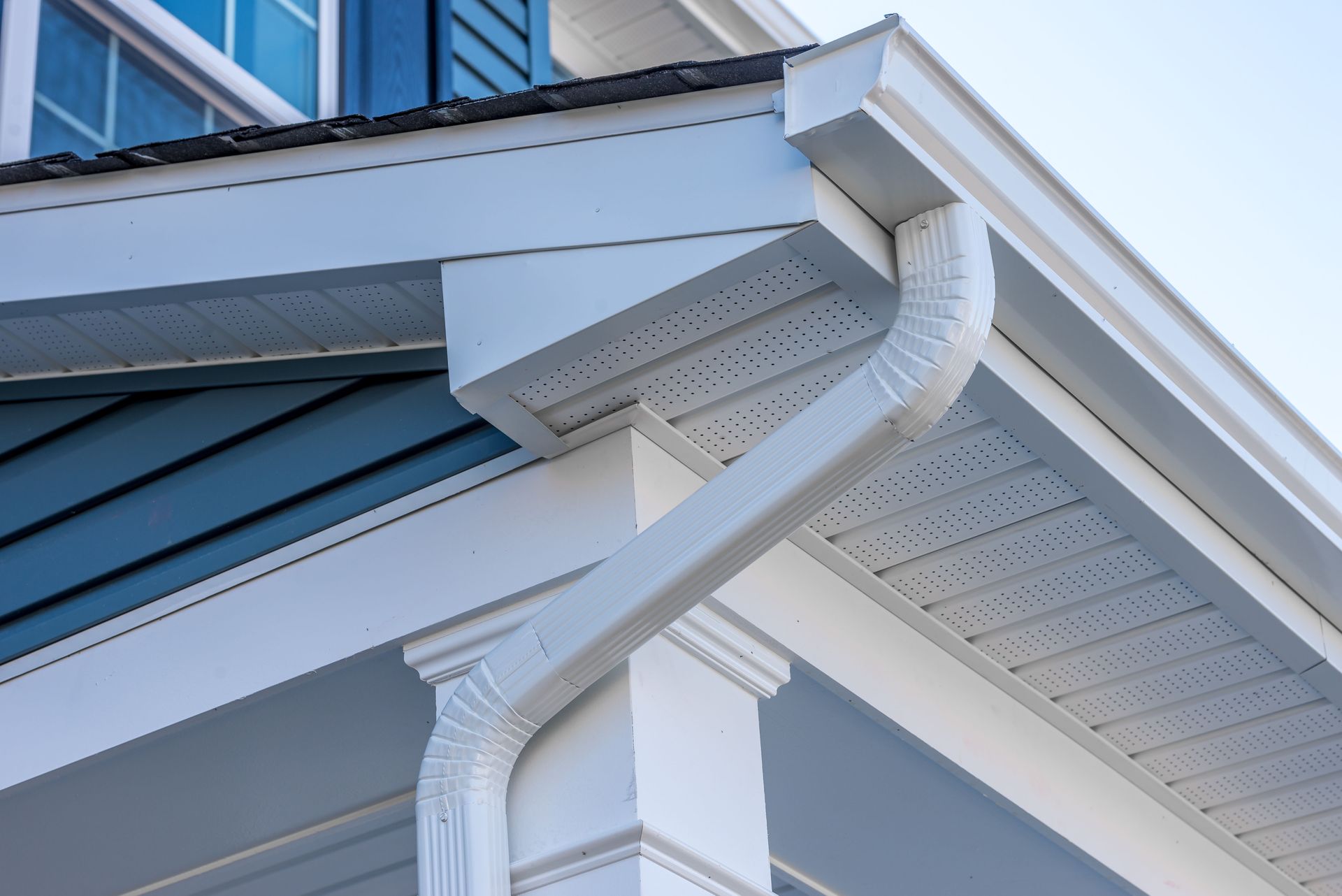October 24, 2025
Gutters are a critical component of any home, acting as the first line of defense against water damage. When properly installed and maintained, gutters efficiently direct rainwater away from the foundation of the house, preventing erosion, leaks, and structural damage. Neglected gutters, however, can lead to significant issues, including roof damage, basement flooding, and mold growth. In this article, we explore the vital aspects of gutter systems, from choosing the right materials to regular maintenance practices.
Understanding the Importance of Gutters
Gutters are essential in safeguarding the structural integrity of your home. By channeling rainwater away from the roof and foundation, they minimize the risk of water-related issues. Without effective gutters, homes are vulnerable to leaks, flooding, and damage to the siding. The efficiency of a gutter system can significantly impact the longevity of a building. This is why it is crucial for homeowners to understand their importance and invest in quality systems.
One of the primary reasons gutters are installed is to prevent water damage. Uncontrolled rainwater can cause erosion around the foundation, potentially leading to serious structural issues. According to the U.S. Census Bureau, more than 80% of new single-family homes in the United States are built with gutters and downspouts for rainwater management, underscoring their role in home protection. Effective gutters control where water flows, significantly minimizing the risks of leaks and damage over time. By maintaining and properly installing gutters, homeowners can avert costly repairs.
Beyond their functional benefits, gutters also play a role in a home's aesthetic appeal. With a range of colors and styles available, gutters can complement a property's exterior design. Well-maintained gutters enhance curb appeal, which can be advantageous if you wish to sell your home. Modern gutter systems offer sleek, streamlined designs that can blend seamlessly with the architectural style of a house. Investing in attractive gutters not only protects your home but also adds to its overall charm.
Choosing the Right Gutter Materials
Homeowners have several options when it comes to gutter materials, each offering various benefits and drawbacks. Commonly used materials include aluminum, vinyl, steel, and copper, which vary in durability, cost, and appearance. Some modern options even utilize zinc or polymer blends for enhanced performance. The choice of material will depend on factors such as climate, budget, and personal preference. It is important to weigh these options carefully to select the best material for your needs.
Aluminum gutters are a popular choice due to their affordability, lightweight nature, and rust resistance. They are easy to install and come in a variety of colors to match any home exterior. However, aluminum gutters can be prone to denting or bending under heavy impact or weight. Despite these cons, their cost-effectiveness and easy maintenance make them a preferred option for many homeowners. Regular inspections can help mitigate potential damage over time.
Vinyl gutters offer homeowners an economical and easy-to-install option. They are lightweight, rust-resistant, and available in a variety of colors. However, they may not withstand extreme weather as well as other materials, potentially cracking in cold climates. For homes in milder conditions, vinyl gutters present a practical solution. Regular upkeep can extend their lifespan, although they may eventually require replacement in harsher environments.
Inspecting and Preparing for Installation
Before starting any
gutter installation, it’s important to evaluate your home’s specific needs and conditions. Factors such as roof size, slope, local climate, and surrounding landscape all influence what type of gutter system will perform best. Working with a professional installer ensures these elements are accurately assessed, preventing costly errors and ensuring optimal water drainage. Professionals have the expertise to recommend the right materials and configurations for your property, helping your gutter system function effectively for years to come.
Professional installation is always the safest and most reliable choice. Trained technicians bring specialized tools, technical knowledge, and experience that guarantee a precise fit and secure attachment. Attempting to install gutters without professional guidance can result in improper alignment, leaks, or even roof damage. By hiring an expert, homeowners avoid these risks and ensure the system is installed to meet industry standards and local building codes.
Experienced gutter contractors also have access to professional-grade tools and materials that may not be available to the average homeowner. From precision cutting equipment to heavy-duty sealants and hangers, these resources ensure a high-quality, durable installation. Investing in professional gutter installation ultimately saves time, minimizes maintenance issues, and provides lasting protection for your home.
Undergoing The Installation Process
The installation process begins with measuring the roof's perimeter to determine the length of gutters needed. Cutting the gutters to size is followed by attaching them to the fascia using brackets at appropriate intervals. Ensuring a proper slope is crucial, allowing rainwater to flow smoothly toward downspouts. Installing downspouts at the end of each gutter prevents water stagnation and directs it away from the foundation. Finally, securing all joints with sealant ensures a leak-proof system.
During installation, several common mistakes can compromise gutter performance. Incorrectly measuring gutters can result in insufficient material, leading to gaps or overflow. Improper bracket spacing may cause gutters to sag under the weight of rainwater or debris. Neglecting to seal joints properly can result in leaks and water damage. By avoiding these pitfalls, homeowners can ensure a durable and effective gutter system. Careful planning and adherence to installation guidelines mitigate common errors.
Achieving the correct slope is paramount to a functional gutter system, promoting effective water flow. A slight downhill angle ensures rainwater moves efficiently toward downspouts, preventing overflow. According to our professionals, the recommended slope is approximately a quarter inch per ten feet of gutter length, balancing function with aesthetics. Homeowners should verify the slope with a level before finalizing the installation. Regularly checking slopes easily prevents drainage issues and maintains system efficiency.
Practicing Regular Maintenance
Regular gutter maintenance is essential to their prolonged effectiveness. Routine cleaning, ideally twice a year, prevents debris buildup and blockages, ensuring smooth water flow. Ignoring maintenance can lead to clogged gutters, causing overflow and potential structural damage. Professional cleaning services or DIY maintenance using specific tools can achieve this. Keeping gutters clear and functional requires consistent attention from homeowners.
Seasonal preventative measures can further protect gutters from damage throughout the year. In the autumn, removing leaves and debris is crucial to prevent clogging and overflow. Winter preparation involves inspecting gutters and downspouts for blockages and installing de-icing cables in colder regions. Wet spring conditions necessitate ensuring gutter seals remain intact and patched as needed. Summer maintenance helps identify weaknesses or repairs in time for fall regeneration.
Catching wear and tear early is crucial for maintaining gutter performance. Common signs of deterioration include visible rust, sagging sections, or separation at joints. Identifying these problems allows for timely repairs, preventing more extensive damage. Regular inspections, especially after heavy weather, can spot signs of malfunction before they escalate.
Gutters are far more than a finishing touch on a home—they’re a vital system that protects your property from costly water damage. From choosing the right materials to performing regular inspections and maintenance, every step plays a crucial role in keeping your home safe, dry, and structurally sound. By staying proactive, homeowners can enjoy peace of mind knowing their gutter system is ready to handle whatever the weather brings. Contact our experts at TK Gutters today for more information.


